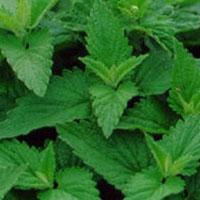Penn Herb Wellness Guide
Catnip Find Products
 © Steven Foster
© Steven FosterParts Used & Where Grown
Catnip is a whitish-gray plant with a minty odor. The flowers are white with crimson dots. The catnip plant grows in North America and Europe. The leaves and flowers are used as medicine.
- Reliable and relatively consistent scientific data showing a substantial health benefit.
- Contradictory, insufficient, or preliminary studies suggesting a health benefit or minimal health benefit.
- For an herb, supported by traditional use but minimal or no scientific evidence. For a supplement,little scientific support.
Our proprietary “Star-Rating” system was developed to help you easily understand the amount of scientific support behind each supplement in relation to a specific health condition. While there is no way to predict whether a vitamin, mineral, or herb will successfully treat or prevent associated health conditions, our unique ratings tell you how well these supplements are understood by the medical community, and whether studies have found them to be effective for other people.
For over a decade, our team has combed through thousands of research articles published in reputable journals. To help you make educated decisions, and to better understand controversial or confusing supplements, our medical experts have digested the science into these three easy-to-follow ratings. We hope this provides you with a helpful resource to make informed decisions towards your health and well-being.
This supplement has been used in connection with the following health conditions:
| Used for | Amount | Why |
|---|---|---|
Cough | Refer to label instructions | Catnip has a long history of use for relieving coughs. |
Insomnia | Refer to label instructions | Catnip is commonly recommended by doctors as a mild sedative for those suffering from insomnia or nervous exhaustion. |
Traditional Use (May Not Be Supported by Scientific Studies)
Catnip is famous for inducing a delirious, stimulated state in felines. Throughout history, this herb has been used in humans to produce a sedative effect.1 Several other conditions (including cancer, toothache, corns, and hives) have been treated with catnip by traditional herbalists.
Copyright 2025 TraceGains, Inc. All rights reserved.
Learn more about TraceGains, the company.
The information presented by TraceGains is for informational purposes only. It is based on scientific studies (human, animal, or in vitro), clinical experience, or traditional usage as cited in each article. The results reported may not necessarily occur in all individuals. Self-treatment is not recommended for life-threatening conditions that require medical treatment under a doctor's care. For many of the conditions discussed, treatment with prescription or over the counter medication is also available. Consult your doctor, practitioner, and/or pharmacist for any health problem and before using any supplements or before making any changes in prescribed medications. Information expires December 2025.


